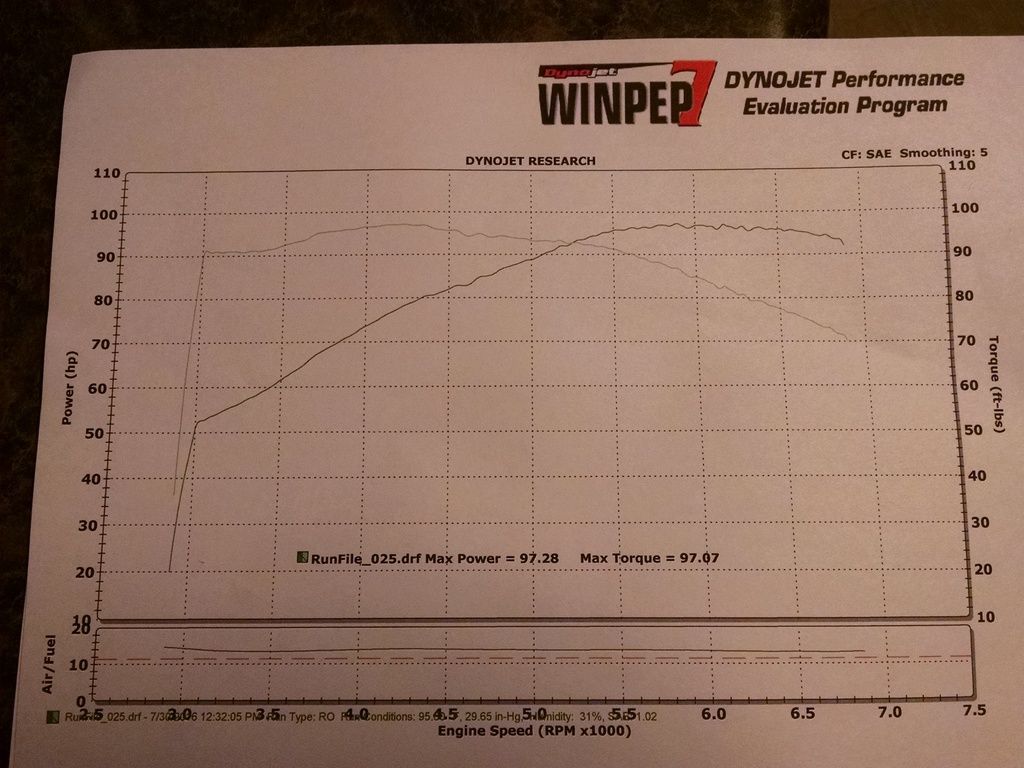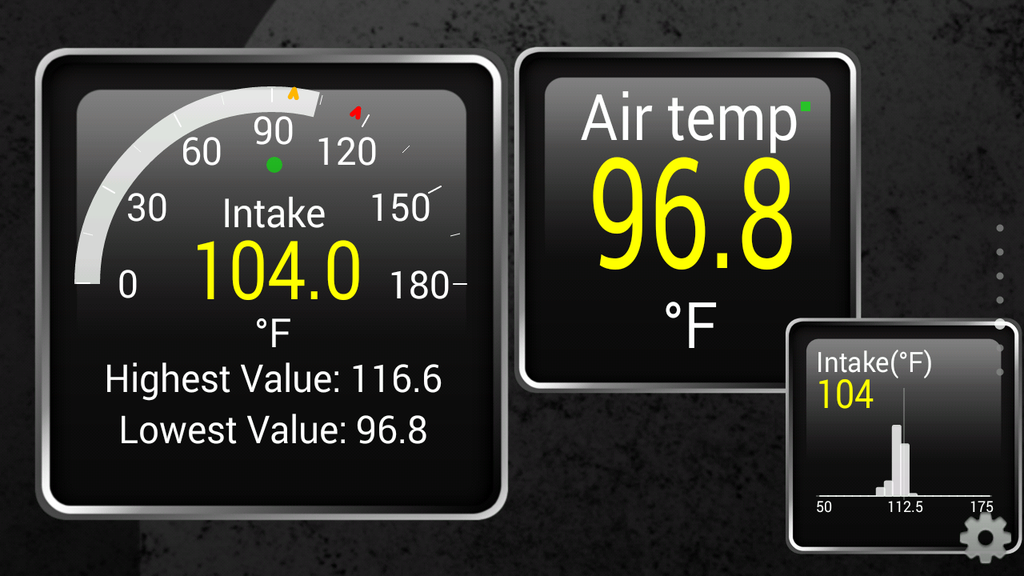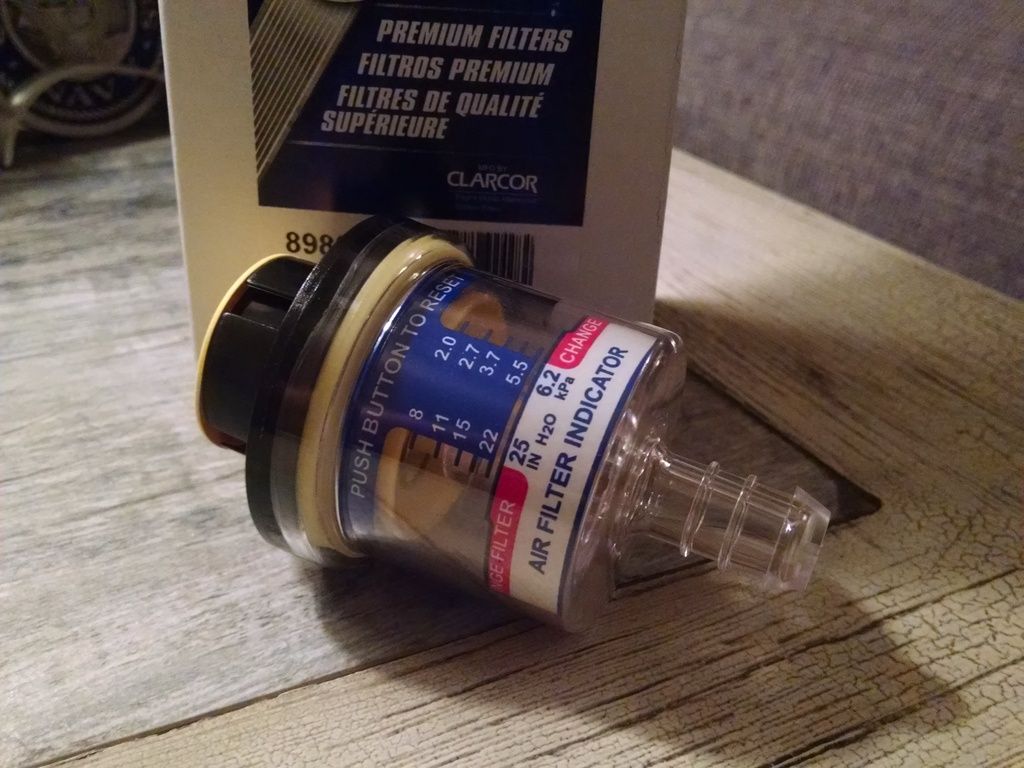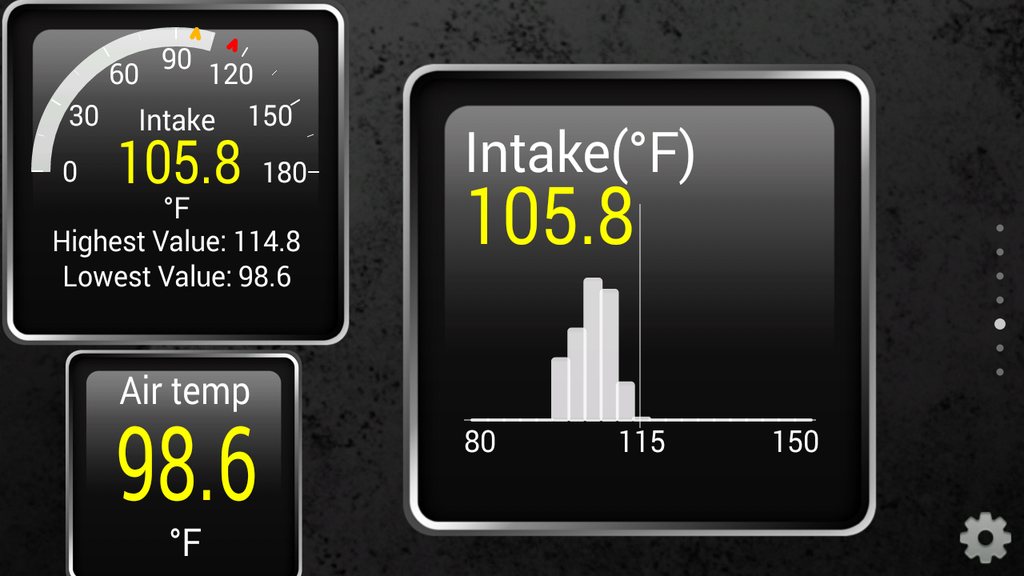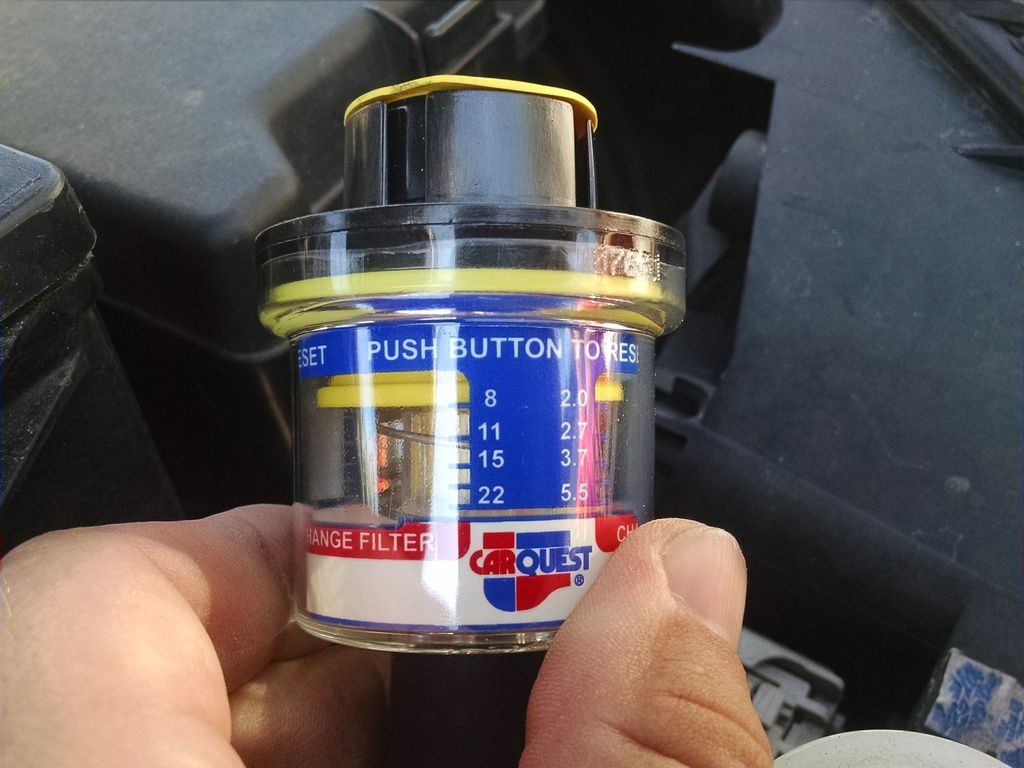Well testing hasn't gone completely as planned... I drove an hour to work on Monday... only to find out that I had the day off(requested it off a LONG time ago because a 2 day event was planned, but ended up not being able to make it for other reasons, and forgot I had it off... ha). So that was one day lost for testing.
Both Tuesday and today(Wednesday) have been very light traffic... so these are probably most comparable to the last histogram I had posted.
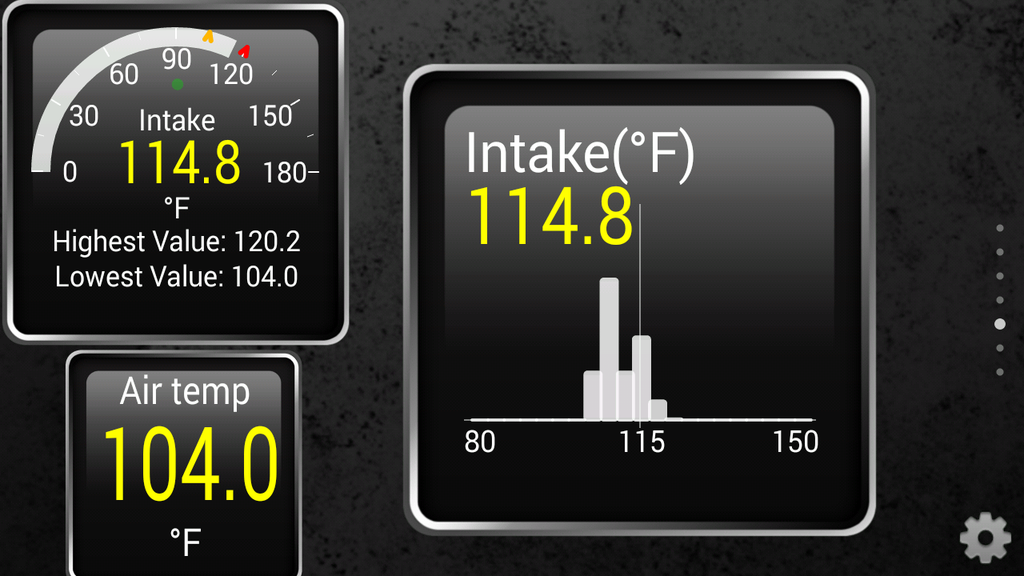
This is from today, NOTE that for whatever reason my phone running Torque decided to shut itself off after the first 2-3 min of driving... so it's missing a few minutes of data early on - it would normally be contributing to the first two bars on the left.

Under these conditions(driving off after starting), it appears the stock intake is better as far as temps go. It doesn't heat soak as quickly, however it also doesn't dissipate heat near as quickly and hangs around 5-10 deg higher than ambient usually. This is noticeable as getting on the highway, it'll take a good 2-3 miles before it gets within 2-3 deg of ambient. Makes sense as the air box is mounted directly to the aluminum valve cover.
I am car pooling tomorrow so won't have data again tomorrow. May or may not bother on Friday... we'll see.
I've also been recording the overall trip(1hr+ driving)... which may also be worth looking at so I'll share those here as well...
This is test #1 with the DDMWorks intake:
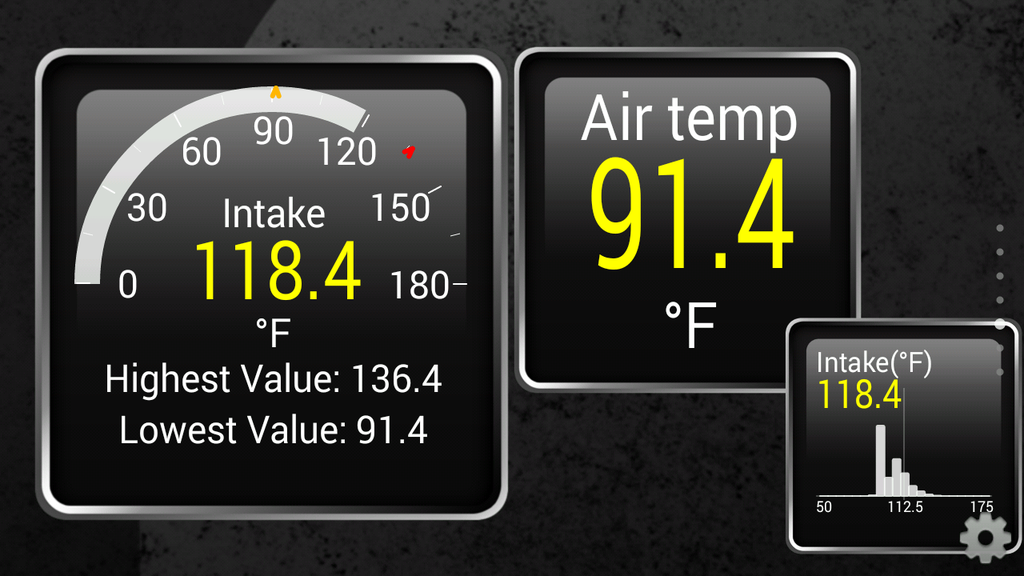
#2:
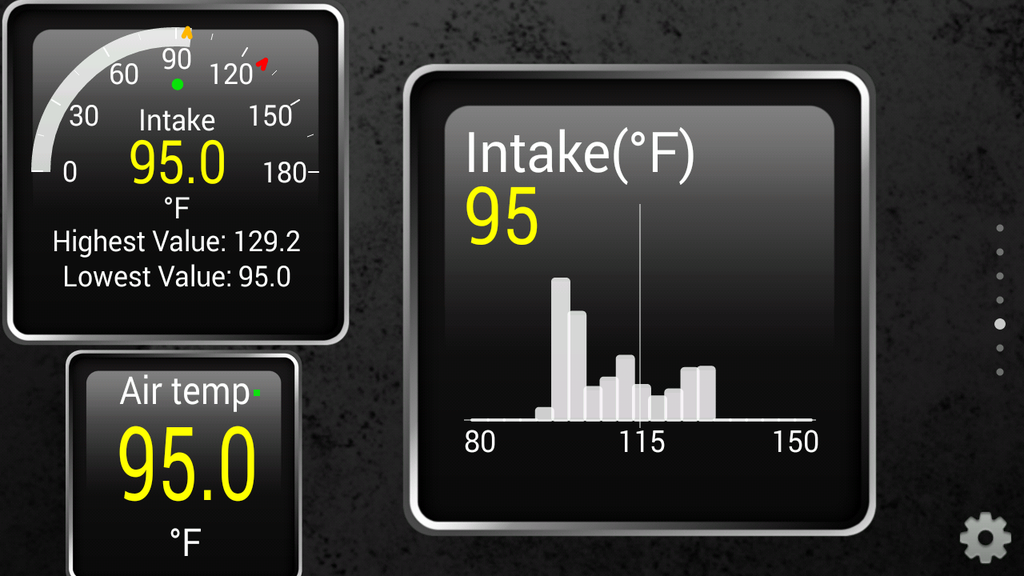
and #3:
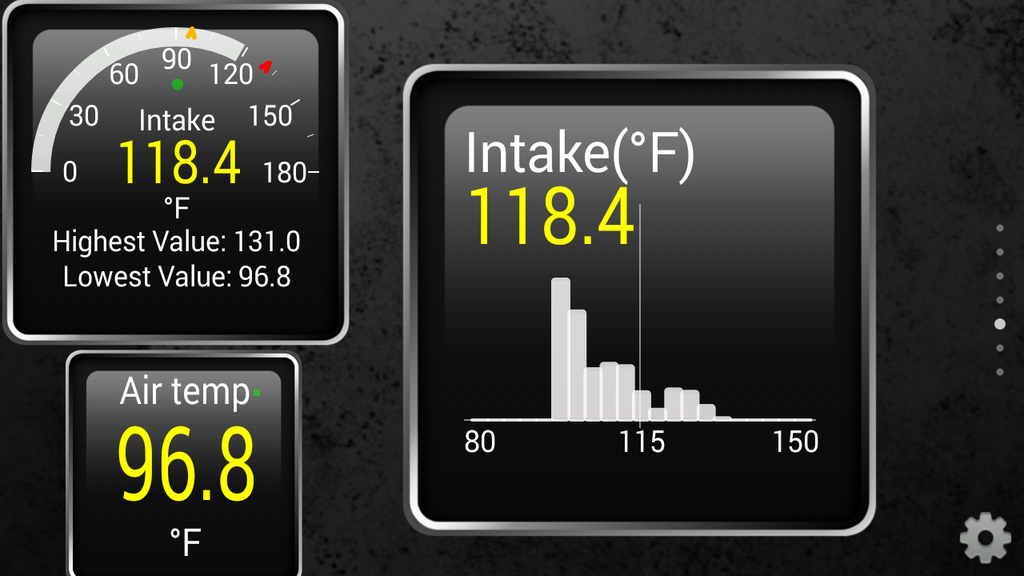
And here is the stock intake... definitely not as bad about total heat soaking... it takes much longer sitting in traffic to reach 30+ over ambient... this one from yesterday:

And this one from today:

Important thing to note on the last graph... the temperature dropped severely when I got about 10 min from home... it was previously 100-102F up until then... it started raining suddenly which is what dropped the temp. So the two bars at the far left can basically be ignored, technically should be added to the third bar.
Basic shape of the stock intake vs the DDMWorks intakes... the DDMWorks intake gives better temps at highway speeds(this sort of surprised me). It drops temps MUCH faster if they get elevated. On the flip side of that, they elevate faster when sitting still. The stock intake takes a bit longer to heat soak to say 20F over ambient... but once it gets there it hangs around at 10+ over ambient unless you get to like 45+ mph. Lower city speeds are not enough air movement I'm guessing to flow around the engine compartment and aid in cooling off the plastic housing. The car has such a small engine, the air going THROUGH the housing doesn't move all that quickly so it stays stagnant and warmer by 5-10 deg under most conditions.
I really wish the scatter plot graphing function of Torque worked... it would be useful to plot intake temps vs vehicle speed. :-/
I suspect with the DDMWorks intake I may benefit from just wrapping the metal tube that houses the MAF sensor... I really think a lot of the "hot air" is actually from the tube acting like a heat sink, not just heating up the air inside it, but the sensor itself. Apparently this is an issue in Mustang applications as well. I'll be experimenting with this next week I believe, once I mod the housing to put the filter minder in place.
Probably in September-October I'll be making moves to improve on the filter setup once I get some clarification on the legality of ducting it from a fog light opening... which would be minimal fab work and a pretty reasonable placement rather than sucking it off the ground like a vacuum. I'd really like to utilize a Donaldson/Volant filter, which is basically impossible to reuse/modify/box in the Corksport duct. An AEM dry-flow would be more conductive to that, but that'll also make working around it a bit of a chore... plus there's such short span from duct area to throttle body, and with engine movement something in there has to give... and with a fully boxed filter that'll be tough to do.
The goal is cold air once moving relatively quickly... minimal heat soak when sitting still... and filtration comparable to stock.
Will keep you guys posted on what happens.

